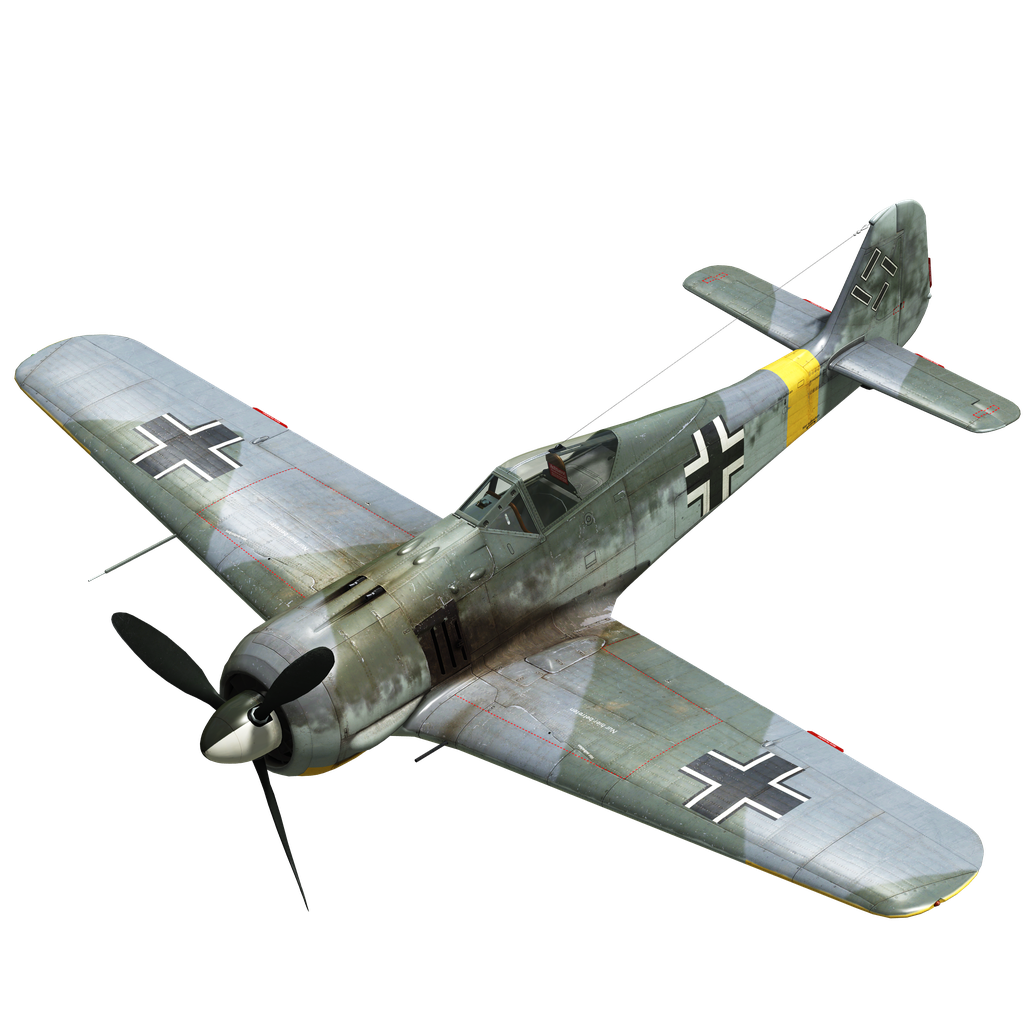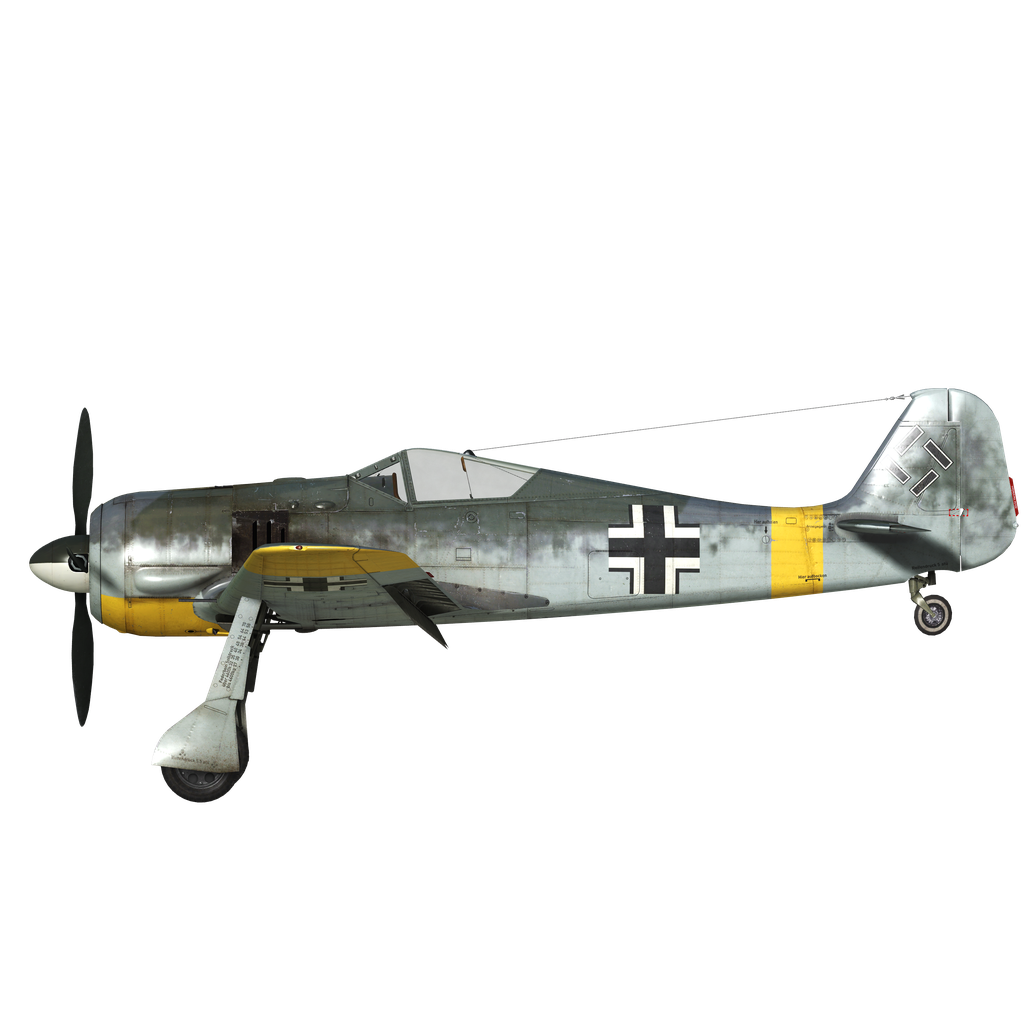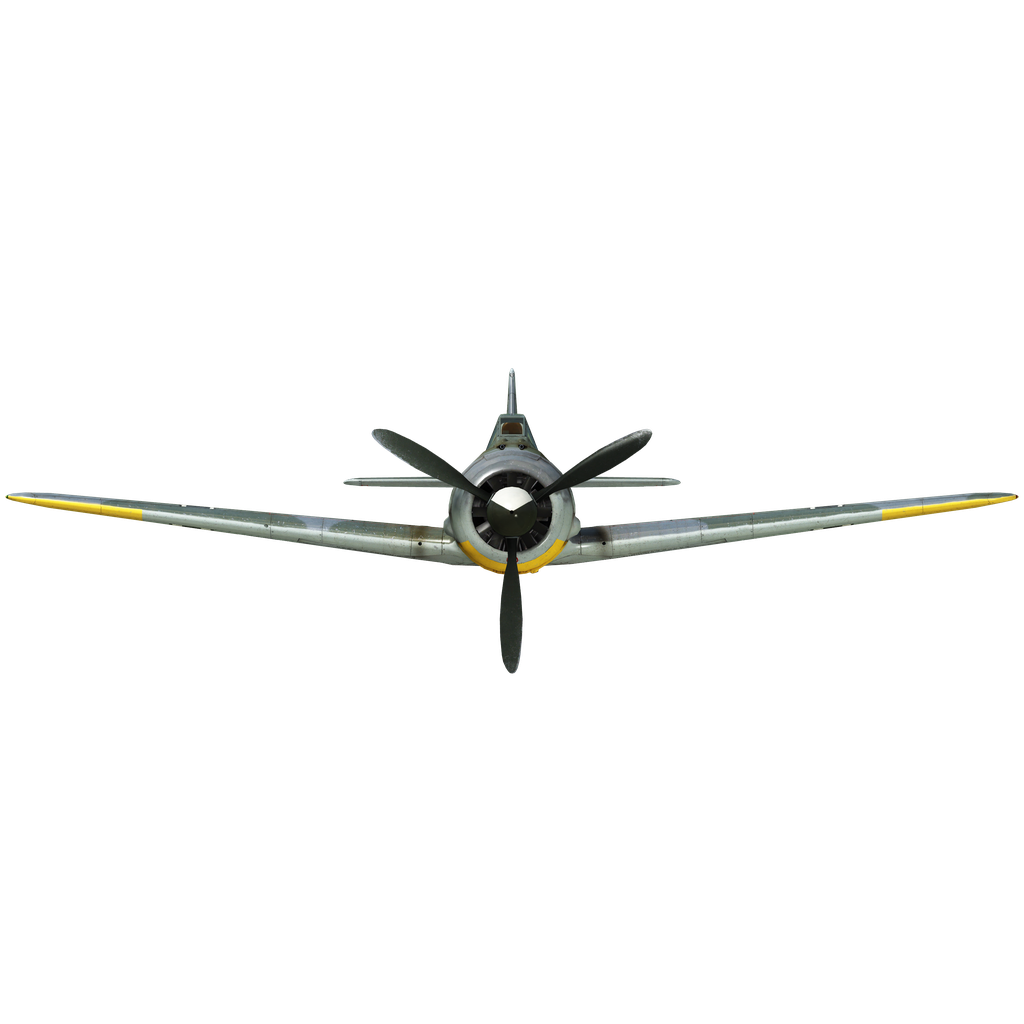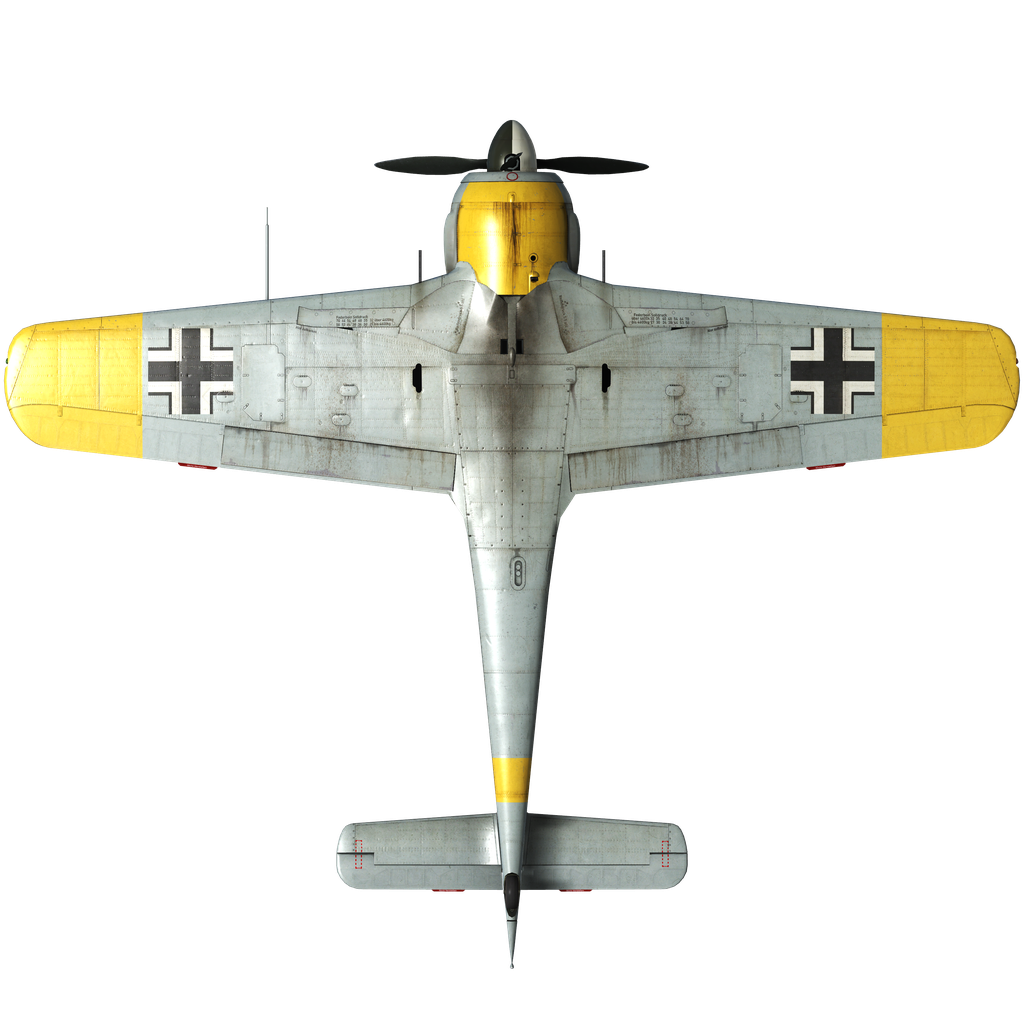In 1938, the Luftwaffe Technical Directorate, disappointed by the debut of the first Bf 109 series in Spain, asked Focke-Wulf to design a new fighter. A distinctive feature of the new aircraft, whose prototype took to the skies on June 1, 1939, was the use of an air-cooled BMW 139 engine and a hollow prop spinner. Another novelty was the use of a large convex cockpit canopy with a minimum of metal binding parts. The aircraft was characterized by good controllability and low stick loading. However, BMW did not succeed in modifying the 139 engine; instead, the BMW 801 engine was introduced, with a similar diameter, but with more weight and slightly more power. The design of the fighter was modified to accommodate the installation of this engine, and from the fall of 1940 to 1942, aircraft of the A-0, A-1, and A-2 series were delivered to combat units.
In the spring of 1942, the BMW 801D-2 went into series production with a takeoff power of 1700 hp, which differed from previous models by an increased compression ratio in the cylinders and some other improvements. At nominal operation at ground level, the engine developed a power of 1570 hp, and at an altitude of 5200 m - 1420 hp.
The installation of this engine on the plane led to the appearance of the production model Fw 190 A-3, which differed from the A-2 version in the shape of the fairings of the supercharger intake manifolds: if previously the convexity of the nozzle was symmetrical concerning the longitudinal axis, now its upper surface became straight and the rear part of the fairing was raised. Initially, the air from the engine compartment passed through simple slots, and after the appearance of controlled flaps on the A-4 model, which made it possible to modify the volume of air passing through, aircraft began to be modified by installing these same flaps.
The armament of the A-3 consisted of four cannons and two machine guns: two MG 151/20 cannons in the wing roots, two MG/FF cannons in the outer wing sections, and two synchronized MG 17 machine guns in the forward fuselage.
-
A-3/U1: only one built with extended forward fuselage, the prototype of the A-5;
-
A-3/U2: experimental carrier of 73 mm RZ 65 rockets;
-
A-3/U3: reconnaissance plane with Rb 50/30 aerial cameras in the fuselage, armament reduced by the removal of the MG/FF cannons;
-
A-3/U4: reconnaissance aircraft with two Rb 12.5/7x9 aerial cameras mounted in the fuselage and an EK 16 gun camera or a Robot II miniature camera on the leading edge of the left wing. The armament was the same as the U3 version, with the addition of an ETC 501 bomb rack under the fuselage to carry a 300-liter fuel tank. 12 aircraft were produced;
-
A-3/U7: Prototype of a light high-altitude fighter, three built. It was characterized by its armament, consisting of only two MG 151/20E cannons in the fuselage, as well as the use of external supercharger intakes.
From February to August 1942, a total of 580 aircraft were produced, and from October 1942 to March 1943, under the "Hamburg" program, an export series of 75 Fw 190 A-3 aircraft was built for Turkey, in whose skies they coexisted peacefully with the Spitfires supplied by the British. On the Turkish planes, all cannons were replaced by machine guns.
The Fw 190 A-3 was most often used in battles over England and on the Eastern Front. One of these planes landed on a British airbase in June 1942 due to a navigational error by the pilot. Tests of the captured aircraft showed that the A-3 was superior to the Spitfire VB in maximum speed and rate of climb at all altitudes, as well as in acceleration characteristics. In a dive, the Fw 190 A-3 easily caught up with the Spitfire, and also had an advantage in maneuverability, except steady (serial) turns. After tests with all types of fighters in service with the Royal Air Force, it turned out that only the new Spitfire IX, which had just entered service, was able to fight on equal terms with the A-3.
Used sources:
1. W. Creen “The Warplanes of the Third Reich”, Galahad Books, 1986
2. “Wings of the Luftwaffe” Translation of V. Green’s book “Combat Aircraft of the Third Reich” by A. Firsov, 1993
3. A.N. Bear "Focke-Wulf FW190" Arsenal-Press, 1993
4. O. Rastrenin “Luftwaffe attack aircraft. Myths and Reality” journal. Aviation and Cosmonautics, No. 3, 2014
5. Materials from the site airwar.ru






